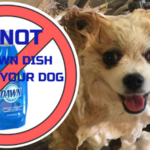How To Secure Dog In Car
Securing Your Dog in the Car: Tips and Tricks for Safe and Happy Travels
Dogs love to go on car rides, whether it’s a short trip to the park or a long road trip to new adventures. However, dogs can also be vulnerable and unpredictable passengers, especially if they are not properly secured. In fact, unrestrained dogs can cause accidents, injuries, and even fatalities for themselves and others. Therefore, as a responsible dog owner, you need to know how to secure your dog in the car. This article will provide you with some practical and creative ways to keep your dog safe, comfortable, and entertained while traveling.
Before we dive into the details, let’s clarify some common misconceptions about securing dogs in cars. First of all, it is not enough to just buckle up your own seatbelt and assume that your dog will stay put. Dogs can become projectiles in a crash, flying through the air at high speed and causing serious damage. Even small dogs can hit with a force equal to several hundred pounds. Moreover, dogs can easily escape from open windows or doors, risking their lives on busy roads or getting lost in unfamiliar places. Additionally, dogs can distract drivers by barking, whining, jumping around, or trying to climb onto their laps. This can impair their vision, hearing, reaction time, and decision-making skills.
Therefore, securing your dog in the car is not only a legal requirement in many states but also a moral obligation for any pet lover. By doing so, you can protect your dog from harm, prevent accidents caused by them, avoid fines and penalties for non-compliance with traffic laws and regulations, and enhance your bond with your furry friend by sharing meaningful experiences together.
Now that we have established why securing your dog in the car matters let’s explore how to do it effectively. Here are some tips and tricks based on different scenarios:
1. Using a Crate or Carrier
If your dog is small enough to fit in a crate or carrier, this can be the safest and most comfortable option for them. Not only does it provide a secure and cozy space for your dog, but it also prevents them from wandering around or distracting you. Make sure that the crate or carrier is large enough for your dog to stand up, turn around, and lie down comfortably, and that it is well-ventilated, sturdy, and clean.
You can place the crate or carrier on the back seat or in the cargo area of your car, depending on your preference and the size of your car. You should also secure the crate or carrier with a seatbelt or a bungee cord to prevent it from sliding or tipping over during sudden stops or turns. Additionally, you can cover the crate or carrier with a blanket or towel to reduce noise, light, and anxiety for your dog. Don’t forget to offer your dog some water and snacks before and after the trip, as well as some toys or chews to keep them entertained.
2. Using a Seat Belt Harness
If your dog is too big for a crate or carrier but still needs some restraint, you can use a seat belt harness that attaches to both your dog’s body and the car’s seatbelt system. This allows your dog to sit upright or lie down comfortably while still being secured in case of an accident. Make sure that the harness fits snugly but not too tight around your dog’s chest and neck, and that it has passed crash tests by reputable organizations such as Center for Pet Safety.
You can choose from various types of seat belt harnesses based on your dog’s size, breed, and personality. Some harnesses have padded chest plates to distribute pressure evenly across your dog’s body; others have adjustable straps to customize the fit; others have reflective strips to enhance visibility at night; others have built-in leashes to prevent your dog from jumping out of the car or attacking other dogs. You should also avoid using seat belt extenders, as they can weaken the system and compromise safety.
3. Using a Barrier or Net
If your dog is restless or likes to move around in the car but you still want to prevent them from accessing certain areas such as the front seats, you can use a barrier or net that separates the cabin from the cargo area. This creates a physical barrier that blocks your dog’s movement while allowing them to see and hear you. Make sure that the barrier or net fits securely and snugly between the two seats, and that it does not obstruct your view or airbags.
You can choose from different types of barriers or nets based on your car’s model and your dog’s size and behavior. Some barriers are made of metal, plastic, or mesh; others are adjustable, collapsible, or removable; others have pockets for storing toys or snacks. You should also allow your dog some time to get used to the new setup before going on a long trip, and reward them with treats and praise for good behavior.
4. Using Other Accessories
If you need more flexibility or creativity in securing your dog in the car, you can use some other accessories that serve specific purposes. For example:
– A pet ramp or step: If your dog has mobility issues or is too small to jump into the car by themselves, you can use a pet ramp or step that helps them climb up safely and comfortably.
– A travel bed or mat: If your dog needs a comfortable place to rest during long trips, you can use a travel bed or mat that is portable, washable, and soft.
– A window shade: If your dog is sensitive to bright sunlight or heat, you can use a window shade that blocks UV rays and reduces glare.
– A GPS tracker: If your dog is prone to escaping or getting lost, you can use a GPS tracker that monitors their location and sends alerts to your phone.
– A first aid kit: If your dog gets injured or sick during the trip, you can use a first aid kit that contains basic supplies such as bandages, antiseptics, and medications.
Regardless of which method or accessory you choose to secure your dog in the car, there are some general tips and tricks that apply to all situations:
– Always supervise your dog while they are in the car, and never leave them alone for long periods of time. Dogs can get anxious, bored, dehydrated, or overheated quickly in a parked car, even with the windows cracked.
– Train your dog to get used to the car gradually, by starting with short trips around the block and rewarding them with treats and praise for calm behavior. Gradually increase the distance and duration of the trips over time.
– Keep your dog’s identification tags and microchip up to date, in case they get lost or stolen during the trip. Also, carry a recent photo of your dog with you at all times.
– Avoid feeding your dog too much before or during the trip, as it can cause motion sickness or accidents. Instead, feed them small meals several hours before or after the trip.
– Make frequent stops along the way to let your dog stretch their legs, drink water, and relieve themselves. Use designated pet-friendly areas or rest stops whenever possible.
– Be prepared for emergencies by carrying some essential supplies such as water bottles, towels, blankets, flashlights, and a spare leash. Also, have an emergency plan in place in case of severe weather conditions or accidents.
In conclusion, securing your dog in the car is not only a matter of safety but also a matter of love and responsibility. By following these tips and tricks and using some creativity and humor along the way, you can make your dog’s car rides a fun and memorable experience for both of you. Happy travels!



